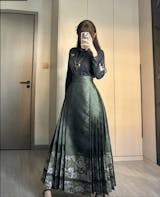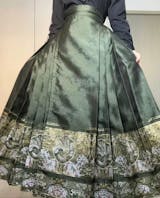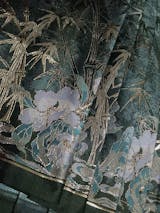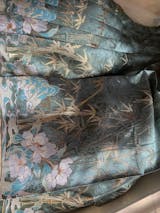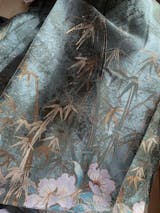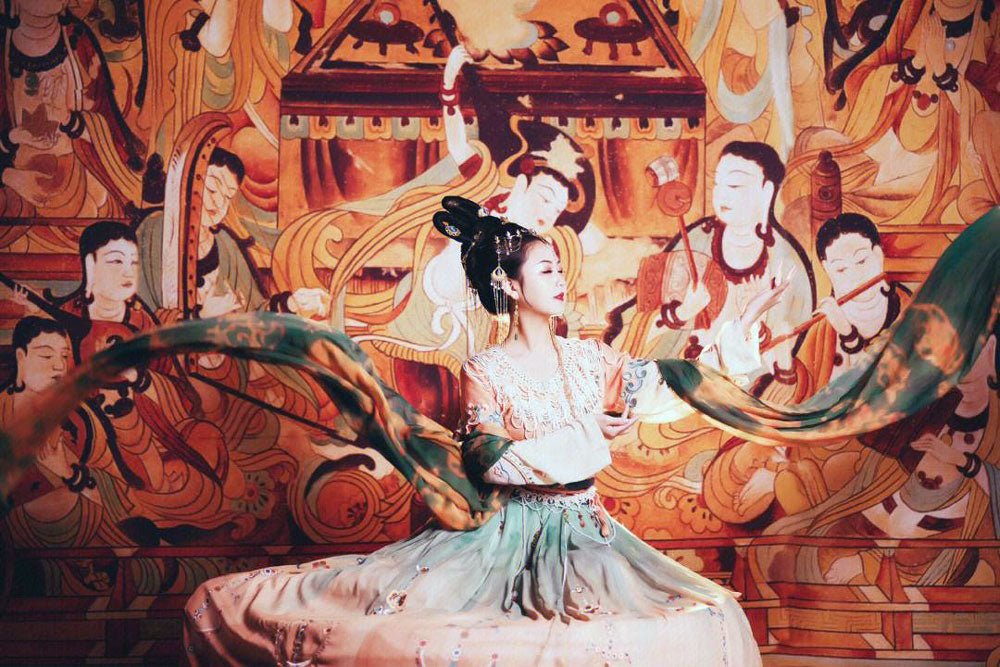
Dunhuang Flying Apsaras (Feitian): One of the Brilliant Representatives of Mogao Cave Culture
What are Dunhuang Flying Apsaras (Feitian)?
First, let's watch a video short film called 'Feitian.'
The birthplace of Buddhism is India, and in India, celestial deities who fly in the sky are referred to as 'flying apsaras.' The concept of flying apsaras was initially introduced from India to China and later merged with elements from Chinese culture. Through gradual refinement and fusion, it eventually gave rise to the recognizable image of Dunhuang Feitian that we see in the Dunhuang cave paintings.

The agile movements, graceful dance poses, vibrant colors, and vast numbers of the Feitian figures represent the captivating beauty and dynamic essence of Dunhuang art. Its magnificent artistic heritage continues to thrive and evolve, showcasing an abundant collection of styles, concepts, and quantities that contribute to the treasury of human art. It stands as a remarkable hallmark in the history of world mural paintings.
What are the Dunhuang Mogao Grottoes?
The Dunhuang Mogao Grottoes, also known as the Thousand Buddha Caves, are located within Dunhuang City in Gansu Province, China. With a history dating back over 2000 years, it is one of the famous Four Great Grottoes in China and a sacred site of Buddhist cave art that has survived on a relatively large scale. It serves as a magnificent treasure trove of ancient Chinese civilization, representing the brilliance of ancient Chinese culture, as well as an important witness to the dialogue and exchange between different civilizations along the ancient Silk Road. Currently, there are 735 caves containing over 45,000 square meters of preserved murals and more than 2,400 painted statues. It represents a three-dimensional art form combining architecture, sculpture, and mural painting.
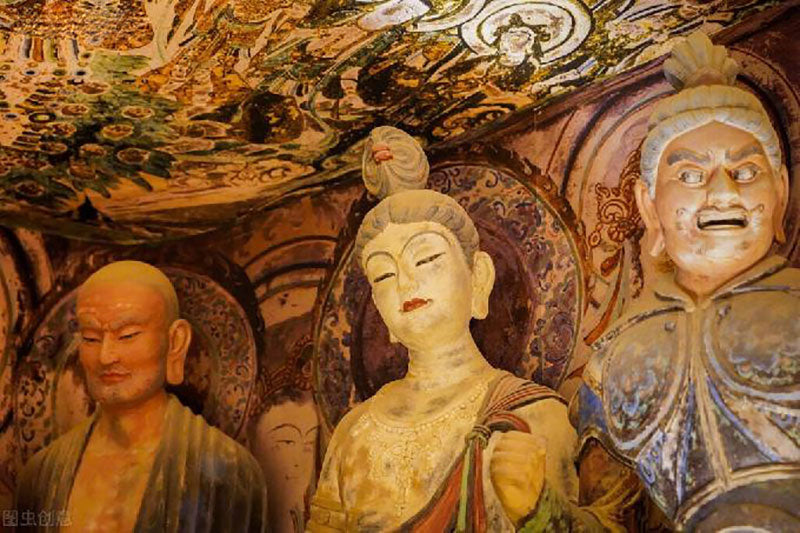
The Mogao Grottoes' murals encompass a wide range of themes, including Buddhist deities, stories from Buddhist scriptures, historical events related to Buddhism, sutra illustrations, divine creatures, portraits of patrons, and decorative patterns. In terms of quantity and content, they surpass any religious grottoes, temples, or palaces in the world today.
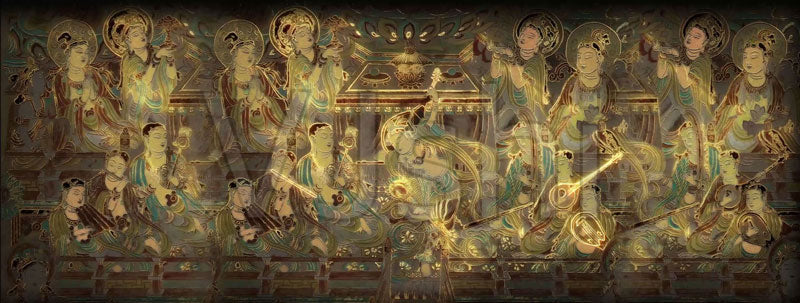
When you enter the caves, you will be mesmerized by the exquisite paintings adorning the passageways, walls, and ceilings. The vivid and serene images of bodhisattvas, graceful celestial maidens dancing, flying apsaras soaring through the air, and blooming flowers in various colors create a captivating sight. The diverse array of murals reflects various aspects of ancient social life, providing invaluable visual materials for the study of feudal society's history, culture, politics, economy, technology, military affairs, religion, architecture, transportation, clothing, music, dance, and folk customs. Hence, the Dunhuang murals have been referred to as the "Library on the Wall."
The Practical Significance of Dunhuang Mural Stories
In the stories of Dunhuang murals, there are teachings that encourage people to do good and be virtuous, such as "good deeds bring good rewards, and evil deeds bring evil consequences." There are also enchanting mythological tales from heavenly realms and the mortal world, featuring well-known figures like the East King, the West Queen Mother, Fuxi, Nüwa, and Zhang Qian. Additionally, there are stories depicting various aspects of human life and reflecting the different states of sentient beings.
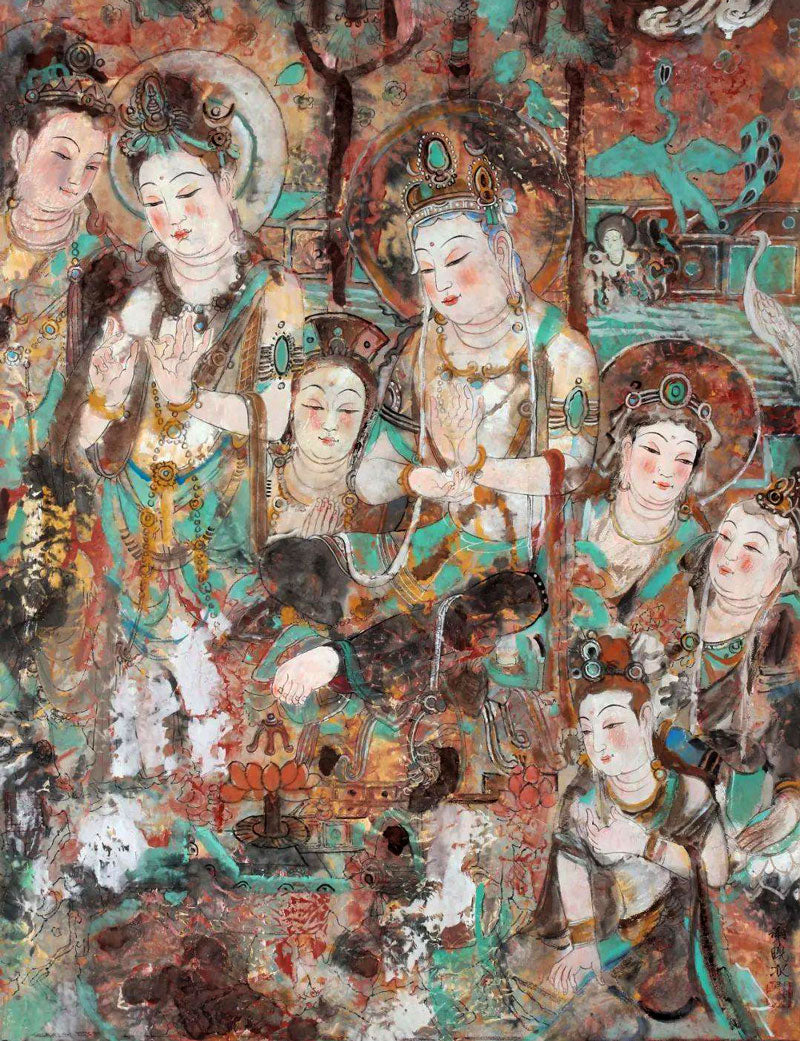
Whether the protagonists in these stories are gods, ghosts, birds, or beasts, they exhibit human thoughts and emotions. Some stories can inspire people with the courage to strive, offering spiritual comfort. Others provide insights into human conduct and offer well-intentioned advice by ridiculing those who pursue profit at all costs and indulge in greed or lust. Some mural stories provide spiritual nourishment, soothing and consoling people's souls. Skillful artists bring the profound Buddhist scriptures to life through vivid brushstrokes, transforming them into accessible and appreciated paintings. Even ordinary people who may not have deep knowledge can appreciate the essence of Buddhism and find their path towards enlightenment.
The Story of "The Sutra of the Nine-Colored Deer"
How many of those hidden stories in the Dunhuang murals have you heard? In terms of content and themes, the narrative murals from this period predominantly feature subjects such as the propagation of Buddhism, the previous lives of the Buddha, and stories based on cause and effect. They showcase the miraculous acts of the Buddha sacrificing himself for the salvation of all sentient beings and the compassionate transformation of the world. Through these vibrant stories, they allow people to gain a profound insight into the power of faith and the benevolent nature of Buddhism.
Now let me share with you the story of Cave 257 in the Mogao Grottoes, known as "The Sutra of the Nine-Colored Deer," which depicts one of Gautama Buddha's previous lives as a nine-colored deer.
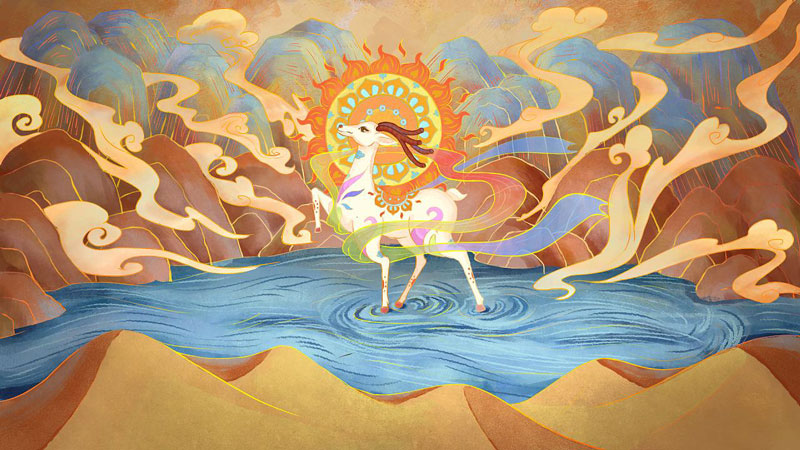
In a beautiful mountain, there was a deer with snow-white antlers and nine vibrant colors all over its body. It was incredibly beautiful and known as the Nine-Colored Deer.
One day, the Nine-Colored Deer was strolling by the riverbank when it heard someone desperately calling for help. A person was struggling in the turbulent waves while holding onto a wooden log. The deer hurried to the shore, calming the drowning person and leaped into the water. It allowed the person to climb onto its back, embracing its neck tightly, and safely carried him out of the water.

After the person was rescued, they immediately knelt down in gratitude and offered to become the deer's servant as repayment. However, the Nine-Colored Deer refused their offer, saying, "I saved you not to make you my servant. Quick, go back home and reunite with your family. Just promise me that you will not reveal my whereabouts, and that will be enough to repay my kindness."
In a lavish palace, the queen had a dream about the beautiful Nine-Colored Deer. She became obsessed with using its multicolored fur to make a bedsheet and its antlers as a Buddha's handle. Upon repeated pleas from the queen, the king, deeply loving his wife, eventually agreed. He announced a kingdom-wide search for the Nine-Colored Deer, offering a substantial reward. Unable to resist the temptation, the person who was previously saved revealed the secret to the king and led him and his army to hunt down the deer.
Despite receiving a warning from its friend, the crow, the Nine-Colored Deer couldn't evade the pursuers in time. When it saw the person who had betrayed its trust, tears of sadness and anger welled up in its eyes. It spoke in human language to the king, explaining everything. Touched by the deer's words, the king ordered that no one should harm or capture the Nine-Colored Deer. As for the person who betrayed his word, he was instantly covered in sores, emanating a foul stench as a consequence of his own actions.
There are numerous stories depicted in the Dunhuang murals, but due to limited space, they cannot all be elaborated here. In general, the stories in Dunhuang murals, like other religious art, portray the images and activities of deities, the relationships between deities, and the interactions between deities and humans. They serve as an artistic expression of people's benevolent wishes and provide solace to the human spirit.
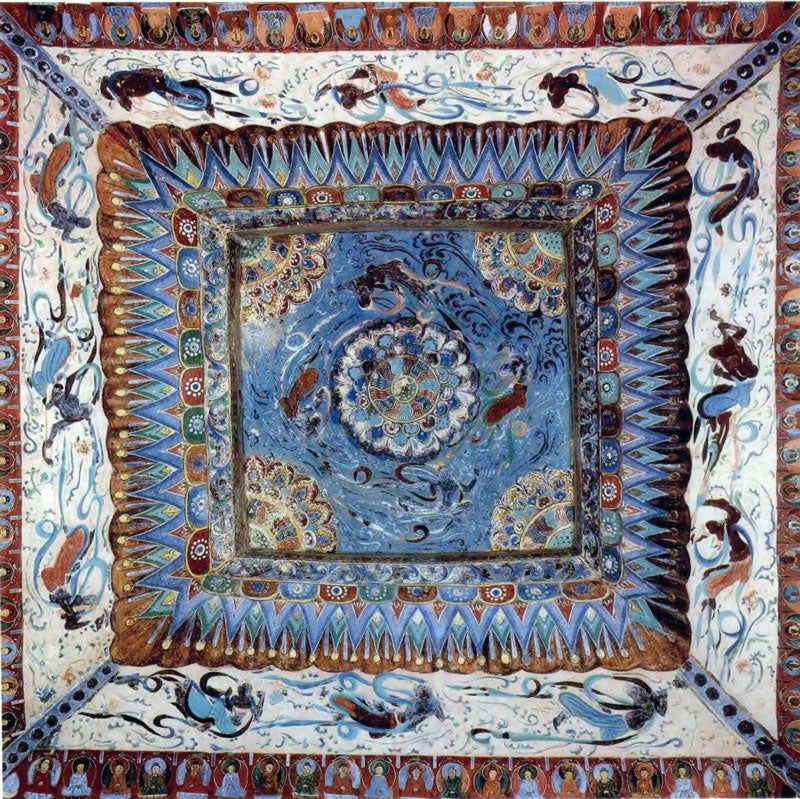
Dunhuang Feitian Cosplay, a New Trend in Popularity
Since June of this year, tourists dressed in delicate and lightweight chiffon clothing, adorned with ancient-style makeup, have been flocking to Dunhuang City in Gansu Province to capture photos with a Dunhuang flying deity (Feitian) theme at various scenic spots.
Presently, nearly a hundred photography shops have emerged in the Dunhuang region. Li Dazhou, the owner of a local store, stated that photography bookings are made several months in advance. He mentioned that apart from taking a breather during the hottest hours of noon, photographers are usually too busy to come down from one of the popular attractions, Mingsha Mountain. In addition to the widely popular Feitian costume, the costumes of Western Region princesses are also highly favored by tourists.
According to the service center of the Mingsha Mountain Crescent Lake Scenic Area in Dunhuang, the introduction of travel photography projects has not only attracted visitors but also showcased the integration of Dunhuang culture with diverse ethnic cultures. Here, tourists can experience different ethnic clothing and cultures, gain profound understanding of Dunhuang's historical background and cultural heritage, and create unforgettable memories…

